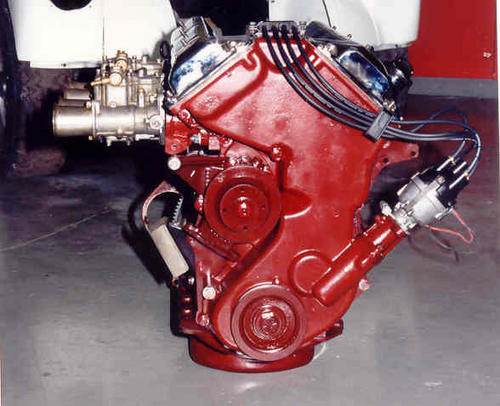hondo402000
Darth Vader
Offline
I ordered new caps, rotors, plug wires, plugs and even a new pertronix, got a spare coil too. that should cover it
Hondo
Hondo
 Hi Guest!
Hi Guest!

 smilie in place of the real @
smilie in place of the real @
 Pretty Please - add it to our Events forum(s) and add to the calendar! >> Here's How <<
Pretty Please - add it to our Events forum(s) and add to the calendar! >> Here's How << 
Plus having to change jets on the side of the road, if you drive a large change in altitude. At least one of our local club members decided it wasn't worth the hassle after VTR 2001 in Breckenridge, CO (elevation 9000+ feet, depending on which side of town you are on).billspohn said:There is no real advantage to Webers on a street engine and the inevitable disadvantage that they need precise setting up, a task few are capable of doing properly.

DrEntropy said:This is always a "fuzzy" topic.
The Webers alone are not gonna pump up the HP output much. They do have accelerator pumps, unlike the SU's, and give the seat-of-the-pants effect of <span style="font-style: italic">seemingly</span> more power. To gain HP, the whole engine whould need to be considered: cam, compression, CC'd head, ported intake & exhaust runners... Hondo went through the drill and dialed a set into compliance. It's a slog of a process, costly as well.
The SU's are VERY efficient devices, not to be dismissed. IMO it ultimately comes down to personal cost/benefit ratio. On a TR3 I'd stick with the SU's.
That's actually not true on a TR3A, at least not with 40 DCOEs. Each SU feeds two cylinders, but the two cylinders do NOT flow at the same time! Each engine revolution, one cylinder sucks for only part of the revolution. Then next turn, the other one does. And the stock SUs have 44mm bores, compared to 40mm on the Webers. So with the stock setup, each cylinder "sees" it's own 44mm bore, instead of 40mm with the Webers.racingenglishcars said:There's a lot to be said here, though I will say Webers will give considerably more power just as a bolt-on. they simply have a larger area of flow (if you use two DCOEs).
billspohn said:Yes, elevation change is where any constant depression carb shines. It doesn't matter a huge amount normally, but if you change elevation 8000 feet, that's going to throw out any fixed jet carb pretty significantly.
Will you also need to change the manifold to accommodate the HS^s?Decisions I have a 1957 TR3 with SUs H6. I lucked upon a pair of HS6s. I am replacing the pistons and sleeves (see separate thread). My question is which set to put on. I have worked out the linkage problem.
Thanks, Charley. I I have discovered the same issue with the water. I was contemplating. PVC elbow or w silt rubber tube.Jay,
I just recently learned thanks to Albert at TRF that the GT6 choke cable is long enough ( plus some) to work on the HS6 carbs when used on the TR3 and 4. It gives you the added feature of having two cables , one to each carb, as intended for those carbs. It makes using the choke so much easier. I had to cutoff some on each cable.
One more item you are going to encounter is the heater hose from the top of the head to the outlet/inlet on the firewall. I had to take use additional hose and form a U shape underneath the rear float bowl and back up to the inlet/outlet.
I finally started the engine for the first time a couple of weeks ago. All seems to be going great after a few items that cropped up in the process.
Charley
